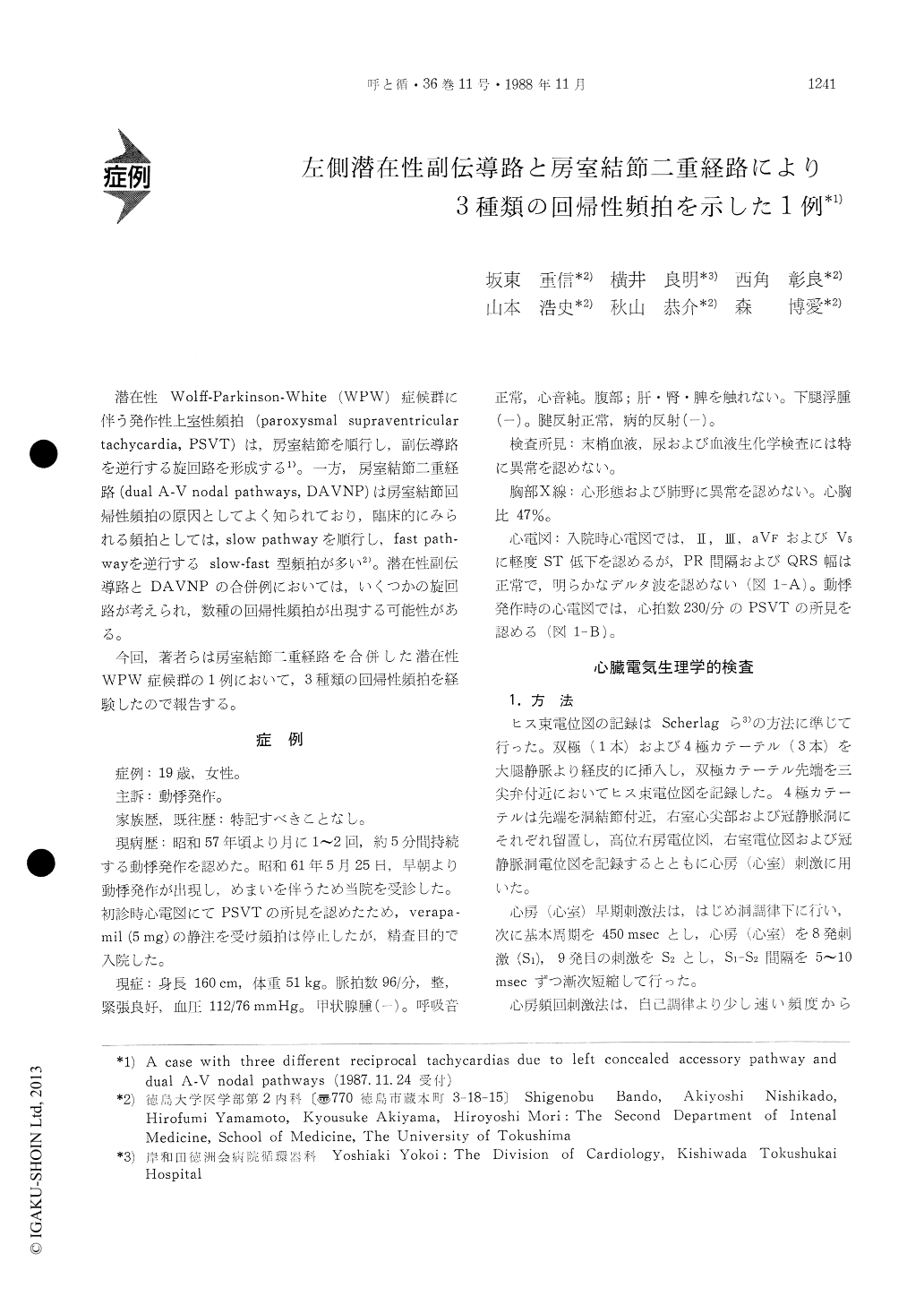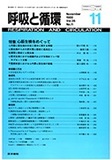Japanese
English
- 有料閲覧
- Abstract 文献概要
- 1ページ目 Look Inside
潜在性Wolff-Parkinson-White (WPW)症候群に伴う発作性上室性頻拍(paroxysmal supraventriculartachycardia, PSVT)は,房室結節を順行し,副伝導路を逆行する旋回路を形成する1)。一方,房室結節二重経路(dual A-V nodal pathways, DAVNP)は房室結節回帰性頻拍の原因としてよく知られており,臨床的にみられる頻拍としては,slow pathwayを順行し,fast path-wayを逆行するslow-fast型頻拍が多い2)。潜在性副伝導路とDAVNPの合併例においては,いくつかの旋回路が考えられ,数種の回帰性頻拍が出現する可能性がある。
今回,著者らは房室結節二重経路を合併した潜在性WPW症候群の1例において,3種類の回帰性頻拍を経験したので報告する。
A case with three different reciprocal tachycardias due to left concealed accessory pathway and dual A-V nodal pathways was reported. The patient was 19-year-old women with a history of palpitation resulting from PSVT and her electrocardiogram showed no evidence of ventricular pre-excitation.
Electrophysiological studies revealed three dif-ferent reciprocal tachycardias. The first PSVT (PSVT 1) was induced by atrial extrastimulus at an A1-A2 of 250 msec during an atrial driven cycle length of 450 msec. This PSVT was characterized by early retrograde activation of left atrium, cycle length of 280 msec and Ae-H interval of 130 msec. This suggested the existence of a left accessory pathway. The second PSVT (PSVT 2) was induced by atrial pacing at the cycle length of 310 msec. This PSVT was initiated with a sudden remarkable prolongation of Ae-H interval and characterized by cycle length of 390 msec and Ae-H interval of 250 msec. This sudden increase of Ae-H interval revealed the existence of dual A-V nodal pathways. Retrograde atrial activation sequences during PSVT 2 was identical PSVT 1. The third PSVT (PSVT 3) was induced by rapid ventricular pacing at the cycle length of 280 msec. This PSVT was character-ized by normal retrograde atrial activation se-quences, atrial activation simultaneous with ventri-cular activation, cycle length of 310 msec and Ae-H interval of 265 msec. These findings were charac-teristics of slow-fast form of A-V nodal reentrant tachycardia. The fast pathway was used for ante-grade conduction in PSVT 1 and slow pathway in PSVT 2.
These observations suggested that a patient with concealed accessory pathway and dual A-V nodal pahways could be showed several forms of reciprocal tachycardia in some conditions.

Copyright © 1988, Igaku-Shoin Ltd. All rights reserved.


